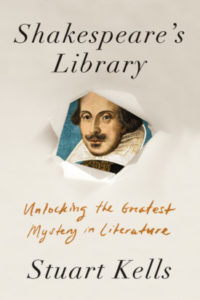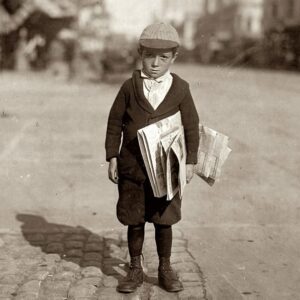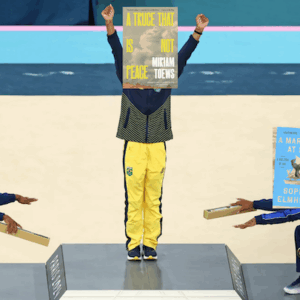
The Ongoing Obsession with Shakespeare's True Identity
Baconians, Oxfordians, Marlovians, Derbyites, Rutlanders, Groupists. Oh My.
Bear pit. War zone. Mad house. My first serious contact with 21st-century Shakespeare studies was during my doctorate at Monash University. Rumor had it that the Clayton campus was the main recruiting ground for Australia’s spy agencies. It was also a hotbed of Shakespeare scholarship—mostly unorthodox and not confined to the English department.
I met at Monash an experimental pathology professor who studied coded messages in Shakespeare’s sonnets. In another faculty, a philosophy professor studied the same sonnets to trace arithmetical, musicological and Platonic patterns. Across the university there were Shakespeare scholars whose backgrounds looked like an implausible case study in multidisciplinarity: law, geography, medicine, nursing, mathematics, French Renaissance studies, commerce, music history, librarianship, drama therapy. In every department and every cafe, it seemed there was a scholar with a new take on Shakespeare and his work.
In this milieu I encountered several breeds of Stratfordians (those who accept the standard Shakespeare biography) and a multitude of anti-Stratfordians (those who reject it): Baconians, Oxfordians, Marlovians, Derbyites, Rutlanders, Groupists. One sub-species was especially well represented. Monash was home to the world’s richest concentration of Nevillians: people who think Sir Henry Neville wrote Shakespeare’s plays and poems. Landing in this parallel universe of unorthodoxy was an unsettling experience. Finding out you’re surrounded by Shakespeare skeptics is like discovering all your friends are Scientologists, or swingers.
At Monash I absorbed the doctrinal distinctions that define the Shakespearean sub-groups, just as hair-splits and sore points separate Trotskyites from Leninists. A Baconian offshoot, for example, claimed Sir Francis was the bastard son of Queen Elizabeth and the Earl of Leicester. An Oxfordian splinter claimed Henry Wriothesley was the lovechild of busy Lizzie and the Earl of Oxford. Quickly I worked out which topics were taboo, which researchers were on friendly terms, and which were on “no speaks.” I acquired the jargon of Shakespeare heresy. Already able to tell my Folios from my Florios, I learnt to speak in shorthand about Quiney, Looney, “Wrizzley” and Knollys, and to cite from memory the Tower Notebook and the Northumberland Manuscript.
Though the heretical factions have little regard for each other, they are united in their belief that “Shakspere” of Stratford cannot have written Shakespeare’s plays and poems. Each faction has a defining affiliation with one or more “true author” candidates.
The Marlovians believe Christopher Marlowe wrote the plays and poems, possibly after faking his own death in 1593. The Oxfordians stand with Edward de Vere, Earl of Oxford (and are known to throw the best parties). The Baconians, the most respectable heretics, attribute the works to Sir Francis Bacon. Different varieties of fence-sitting Groupists postulate sundry scenarios of joint authorship. Through this unorthodox minefield, I had as my guide John O’Donnell. Modest to the point of introversion, brainy to the point of genius, John was the hub of the Nevillian sect, the only member on polite terms with all the others.
Finding out you’re surrounded by Shakespeare skeptics is like discovering all your friends are Scientologists, or swingers.
When I first met John, he was the university’s organist. By the end of primary school John could play and conduct all nine Beethoven symphonies. He wrote concertos and symphonies, performing them in his uncle’s amateur orchestra. John won a music scholarship to a school where Shakespeare’s plays and Bacon’s essays were central to the curriculum. By the end of high school John could recite from memory Julius Caesar, The Merchant of Venice, Twelfth Night and The Taming of the Shrew.
After he graduated from university John stayed on to specialize in deep analysis of early musical documents. He made dozens of trips to the libraries and music rooms of Germany, Austria and Italy. From disparate and forgotten fragments he was able to piece together, and then perform, some of the first operas. This work took John to the top of his field. Becoming head of music at the Victorian College of the Arts was the high point of his career. John, though, was never more content than when teaching and performing. Specializing in 16th- and 17th-century music, John mastered and taught “sight singing,” the highest level of choristry.
Precise and diligent as a musician and as a scholar, John discovered that 17th-century musical printings were unreliable. He also found that games and puzzles were central to the creation of classical music; the mathematical squares embedded in Bach’s works were an example. These discoveries laid a foundation for entry into Shakespearean skepticism, a field to which John brought a unique perspective. He heard the music in the writing.
John first paired off with his future wife, a musician and masters student, at a surrealist ball. Surrounded by clawed hands, marble sushi, tomato throwers and dry ice, John and Jacky had their first kiss. The ball’s organizer would later initiate university changes that became a lightning rod for discontent with the local version of modern academia. A new breed of academic took over the music school. When I met John and Jacky, they were almost émigrés from an academy they felt had turned its back on excellence.
John and Jacky’s neighborhood north of Melbourne was a place of danger. Bushfires regularly threatened the district. On the main road, reckless kangaroos jumped precipitously into the path of cars. In 2015 John survived two separate high-speed collisions with eastern grays. Shunning these external dangers, the interior of John and Jacky’s home was a refuge. It housed a Shakespeare reference library and a sixteenth-century Musikbibliothek, including volumes of musicology, early music and the largest collection of early keyboard instruments outside Europe.
Despite his status as an academic exile, John continued to travel regularly, visiting libraries, playing French and German church organs, and otherwise studying and performing. Several trips were made as part of John’s lifelong search for the Monteverdi opera L’Arianna (1607–08). The opera’s libretto survives but the music is lost. Partly to fill this gap, John and Jacky named their daughter Arianna. In Arianna’s first year at high school, her English teacher announced that the class would study Shakespeare. Did anyone in the class know anything about him? Brought up from birth as an anti-Stratfordian, and recently converted to Nevillism, Arianna was ready with the answer. “He was illiterate,” she declared, “and he died in 1615.” At home that evening, she recounted the exchange to John, who brimmed with pride.
Over many meetings and glasses of Heathcote shiraz, John tutored me on the Shakespeare authorship controversy and the Nevillian heresy. Sir Henry Neville is a recent addition to a list of aristocratic author candidates that includes three monarchs and eight earls, plus Sir Francis Bacon, Sir Walter Raleigh, Sir Anthony Sherley and William Seymour, the “illegitimate son” of Lady Catherine Grey and the Earl of Hertford.
Courtier, politician and diplomat, Henry Neville was born with an impeccable pedigree. His great-great-great-grandfather was Ralph Neville, First Earl of Westmorland and husband of Joan Beaufort, the daughter of John of Gaunt. Henry’s noble ancestry also stretched back to Gilbert de Neville, steward to William the Conqueror, and possibly to Alan de Neville, chief forester of Henry II. He grew up at Billingbear House in Berkshire. His tutor at Merton College, Oxford, was the brilliant but autocratic Henry Savile. Between 1578 and 1582 Neville accompanied Savile on a Continental tour that took in France, Italy and Germany. The Queen’s Secretary of State, Sir Robert Cecil, introduced Neville at court. Neville served as Berkshire’s High Sheriff, and sat in Parliament at different times as the member for New Windsor, Sussex and Berkshire. After the 1597 election he was MP for Liskeard in Cornwall. Two years later he took up an even more distant posting: ambassador to the Court of Henri IV, King of France.
Neville abhorred his ambassadorship and tried many times to get out of it. When eventually he returned to England he was caught up in the disastrous Essex Rebellion of 1601, a bungled attempt to depose the aged Queen. The leader of the rebellion, Robert Devereux, Second Earl of Essex, had previously enjoyed the Queen’s favor and a lucrative royal monopoly on the sale of sweet wines. After the rebellion fizzled, Elizabeth had Essex executed. Neville escaped that fate “only with difficulty.” Imprisoned with Henry Wriothesley, Earl of Southampton, in the Tower of London, Neville was stripped of his position and fined ten thousand pounds (later reduced to five thousand, payable in convenient installments). He had to wait for the Queen’s death before he could hope to be released.
Pearson is a serious publisher, and the book demands to be taken seriously. Though it contains many typos, the book has a feel of quality production.
Once free, and having already alienated one monarch, Neville set about antagonizing King James by advocating for a powerful House of Commons. As a consequence, Neville was overlooked for the position of Secretary of State. When offered the position of Treasurer of the Chamber, he turned it down, possibly out of pique. He did enjoy, however, the royal right to collect a twelfth of the tariff on imports of indigo.
Portentously, the Oxford Dictionary of National Biography suggests that Neville was a more important figure than he seems. If he did indeed write Shakespeare’s plays and poems, then that suggestion is certainly correct.
The first direct expression of the Nevillian authorship case was The Truth Will Out (2005) by Brenda James and William Rubinstein. Like all Shakespeare heretics, James and Rubinstein had to prove two things: first, that Shakespeare did not write the plays and poems; and second, that a specific someone else did. Shakespeare’s missing library was key to how James and Rubinstein answered the first question. The co-authors could not believe Shakespeare was a playwright yet no one in his Stratford household had retained a book, playscript or other document from his literary career.
The Nevillian answer to the second question rests on four pillars, plus one “smoking gun” and much circumstantial evidence. The first pillar is chronological. Unlike those of Edward de Vere, who died in 1604, and Christopher Marlowe, who died in 1593, Henry Neville’s dates align very closely with Shakespeare’s. James and Rubinstein put forward plentiful evidence that the published plays and poems closely reflect the sequence of Neville’s foreign travels, business affairs, relationships and achievements.
The second pillar rests on an interpretation of the cryptic dedication in the 1609 edition of Shakespeare’s Sonnets:
TO THE ONLIE BEGETTER OF THESE INSVING SONNETS MR W. H. ALL HAPPINESSE AND THAT ETERNITIE PROMISED
BY
OVR EVER-LIVING POET WISHETH
THE WELL-WISHING ADVENTVRER IN SETTING FORTH
James announced she had deciphered a coded message in the dedication. She further claimed to have explained the dedication by linking it to Neville’s investment—the “adventure”—in the new American colony of Virginia.
The third pillar is the so-called Northumberland Manuscript. Discovered in 1867, it is a curious document that features the names of Neville, Shakespeare and Bacon, along with the Neville family motto, the names of two plays, a line from The Rape of Lucrece, a version of the mysterious long word—honorificabilitudinitatibus—from Love’s Labour’s Lost, and much else seemingly of relevance to the Authorship Question. The manuscript may date from as early as 1596.
The fourth pillar is also documentary. Dated 1602, the Tower Notebook is an anonymous manuscript, nearly two hundred pages long, possibly completed by Neville during his imprisonment. It describes Anne Boleyn’s coronation in phrases that James and Rubinstein believe are precursors to the coronation scene in Henry VIII. James and Rubinstein also claimed to have found a “smoking gun” that sealed their proof of Nevillian authorship: the identification of Malvolio in Twelfth Night as a caricature of the womanizing nobleman, William Knollys (more about that later). Based on all this evidence, James and Rubinstein concluded Shakespearean authorship was a “conspiracy” and an “elaborate hoax.”
James and Rubinstein are not without academic credentials. Brenda James was an occasional lecturer at the University of Portsmouth, where she pursued her interest in Rosicrucian and Cabbalistic symbology. After completing postgraduate studies then lecturing on English and Civilisation, she left her occupation to pursue Neville. “I was embarking,” she said, “on a trail of long-envisaged, very independent research.”
An adjunct professor at Monash University, James’s co-author Bill Rubinstein was well placed to collaborate in the unmasking of a conspiracy. He had already written on two mainstays of the conspiracy movement: the Kennedy assassination and the Jack the Ripper murders. On Kennedy, Rubinstein’s thesis was that Oswald did shoot the President, but was aiming at Texas Governor John Connally.
James and Rubinstein’s collaboration was uneasy from the start. Impatient with each other’s boundaries, the authors ended their collaboration not long after The Truth Will Out appeared in print. During the processes of research and writing, James worked largely in secret. When the writing was mostly finished, Brenda gingerly admitted a fellow lecturer into the circle—David Jenkins—to help with a few things. She later thanked him for his trustworthiness, and for his knowledge of “esoteric symbolism.”
Pure, natural genius, John thought, was not enough for someone to author Shakespeare’s works. Knowledge and training were also prerequisites.
Rubinstein’s role in the project is fairly clear. He was both co-author and structural editor. After receiving Brenda’s “over-long manuscript” he removed much of the padding (the resulting 300 pages are still hard going). James and Rubinstein disagreed on fundamental points of fact and method. How should their case be presented? Could evidence from ciphers be taken seriously? What constituted sufficient evidence? The negotiated resolution of many of these questions failed to satisfy either author. After The Truth Will Out, Rubinstein would collaborate again. With Dr. John Casson, a “retired psychotherapist, dramatherapist and psychodrama psychotherapist,” Bill published Sir Henry Neville Was Shakespeare. Brenda’s subsequent books, though, would all be solo projects.
Rubinstein seems to have been the main author of several parts of The Truth Will Out, especially the introductory chapters that locate the Nevillian thesis in the broader context of Shakespeare scholarship and heresy. The British Library catalogue, though, puts Brenda as the principal author. The book’s imprint page states that the copyright rests solely with her. In both the hardback and paperback prefaces, she claims the book and the initial discovery as her own.
Many heretical tomes have appeared under little-known imprints and with the look of self-publication. A surprisingly high proportion, though, have been produced by well-known publishers. Shakespeare heretics complain that British universities maintain an embargo on heretical works, but major trade publishers abide by no such constraint. Literary agents sold the James–Rubinstein manuscript to Pearson Longman, now part of the Penguin Random House group. Pearson is a serious publisher, and the book demands to be taken seriously. Though it contains many typos, the book has a feel of quality production. Adding to the sense of weight, the endmatter stretches for 142 dense pages. Unexpectedly, the book became a bestseller.
John O’Donnell’s skepticism about Shakespearean authorship had been building for decades. He could not believe spontaneous natural genius was enough to catapult the son of a provincial tradesman into the pantheon of poets and playwrights. John drew analogies from his musical studies. Bach and Mozart possessed ample reserves of genius, but also enjoyed wonderful musical educations; both had people in their lives who steered the evolution of their talent. Pure, natural genius, John thought, was not enough for someone to author Shakespeare’s works. Knowledge and training were also prerequisites. John turned his skeptical eye to Shakespeare’s Stratford grammar-school education. Certainly the curriculum there could not explain Shakespeare’s trajectory.
Even more damaging for the Stratfordian case was John’s conclusion that Shakespeare probably did not attend the school at all. When young William was of an age to attend grammar school, only one in two boys from his Stratford cohort did so, and Will’s parents were broke. Illiterate John Shakespeare had risen in the Stratford community, becoming an alderman and an important local figure. If he could do that without a school education, John O’Donnell asked, then why send his son to grammar school?
O’Donnell’s musical studies taught him how to gauge the personality behind the music. He could do the same with writing. Reading Bacon alongside Shakespeare, he concluded Bacon’s was neither the same personality nor the same mind as Shakespeare’s. The Earl of Oxford also left behind published work that John could compare with Shakespeare’s. (Henry Neville did not publish at all, but left plentiful letters.) O’Donnell went online and ordered the foundation texts of the Oxfordian case. Then he read some of de Vere’s own writings—and he cancelled the book order. “This man is nothing like Shakespeare,” he said. “Wrong voice, one dimensional, whereas Shakespeare is multi-layered.” (De Vere’s odious character traits—the casual murders, the pedophilia—were further reasons to rule him out.)
O’Donnell considered other candidates. On paper, Mary Sidney had a lot going for her. She came from a literary family. She had estates on the Avon. Spenser dedicated a poem to her. She was well educated and beautiful. In Bill Bryson’s words, “All that is missing to connect her with Shakespeare is anything to connect her with Shakespeare.” So, too, for the other candidates. Every one had a fatal flaw.
“All that is missing to connect her with Shakespeare is anything to connect her with Shakespeare.” So, too, for the other candidates. Every one had a fatal flaw.
And then John O’Donnell read The Truth Will Out. Bells rang. Pennies dropped. He could see the book’s shortcomings, but was sufficiently convinced to delve deeper into the Nevillian case. He re-read the plays with Neville in mind. “Everything began to fall into place,” he said. The other contenders had nothing on Neville. He was the state-of-the-art candidate.
O’Donnell wrote to local and international Nevillians and other anti-Stratfordians. He formed heretical friendships with Neal Platt (as “Neal Roberts,” author of the New York Times bestseller A Second Daniel: A Tudor Intrigue (2015)) and Dr. John Casson (author of Enter Pursued by a Bear (2009), in which he claimed to have attributed to Shakespeare another poem, another comedy and two tragedies).
At Monash, John O’Donnell befriended Mark Bradbeer, and Brenda James’ co-author, Bill Rubinstein. A series of Nevillian soirees followed. At one landmark dinner in Melbourne in 2015, six heretics gathered to celebrate the 400th anniversary of Neville’s death. Having agreed that de Vere and Bacon suffered from “glaring deficiencies,” the diners drank the first of two toasts: to Neville as the most viable author of the Shakespeare œuvre.
The second toast acknowledged what the Nevillians were getting into. Infused with everything bad about academic politics and art-world politics and small committee politics, the field of modern Shakespeare studies is toxic. (There were bad vibes from the very start: when Garrick led the Shakespeare Jubilee, querulous literary scholars queried why an actor was in charge.) Vitriolic antipathy stands between the Stratfordians and anti-Stratfordians, and within and between the anti-Stratfordian sects. As Reginald Churchill noted in 1958, the number of authorship candidates exceeds the total number of plays and poems. There are more Shakespeare claimants than there are variant spellings of his name. The proliferation of heretical species pleases the Stratfordians: division makes the other side appear more vulnerable; and the Stratfordians like to imagine each flavor of heretic belonging to its own tailor-made compartment of Hell.
The diners raised their glasses, to “swimming in shark-infested waters.” That year would be a good one for the cause. John Casson collaborated with Mark Bradbeer to write Sir Henry Neville Alias William Shakespeare (2015), a work focused on evidence in the history plays. Rare-book dealer Malcolm Moncrief-Spittle called it “an excellent book. It seems to me that the case for Henry Neville as author is proved beyond reasonable doubt.”
John O’Donnell had already decided to swim with the sharks. He delved into authorship studies and conducted his own Nevillian research. Naturally, John adopted a musical perspective. I was at John’s home in the giddy moment when he first learned that Neville had owned a lute, and may have had lute lessons in Italy. As Bill Bryson noted, the author of Shakespeare’s plays knew that “lute strings were made from cowgut and bowstrings of horsehair.”
John announced his findings at a stately mansion on Mount Macedon. (The mansion’s previous owner was at the center of a spy scandal; the building was said to be bug-wired throughout.) Interspersed with musical interludes, John’s speech summarized the Nevillian case: the inadequacy of Shakespeare’s education; the missing library; hints at secret authorship; the decryption of the sonnet dedication; Neville’s foreign travels; the many mentions of his ancestors in Shakespeare’s works; and Neville’s frequent use of hendiadys, also common in Shakespeare.
Other thrilling moments would follow, such as when John shared the discovery that Neville was among the first to use the word “refrigeration.” The most exciting moment of all, though, was when John announced the Nevillians had found a library. Neville’s library. Shakespeare’s library.
__________________________________

From Shakespeare’s Library: Unlocking the Greatest Mystery in Literature by Stuart Kells. Used with permission of Counterpoint Press. Copyright © 2018 by Stuart Kells.
Stuart Kells
Stuart Kells is an author and book-trade historian. His 2015 history of Penguin Books, Penguin and the Lane Brothers, won the prestigious Ashurst Business Literature Prize. His critically acclaimed biography of Kay Craddock—the first female president of the International League of Antiquarian Booksellers—Rare, was published in 2011. His most recent book is Shakespeare's Library: Unlocking the Greatest Mystery in Literature. An authority on rare books, Stuart has written and published on many aspects of print culture and the book world. He has a PhD from Monash University, and lives in Melbourne with his wife, Fiona, and daughters, Thea and Charlotte.












